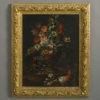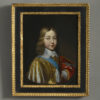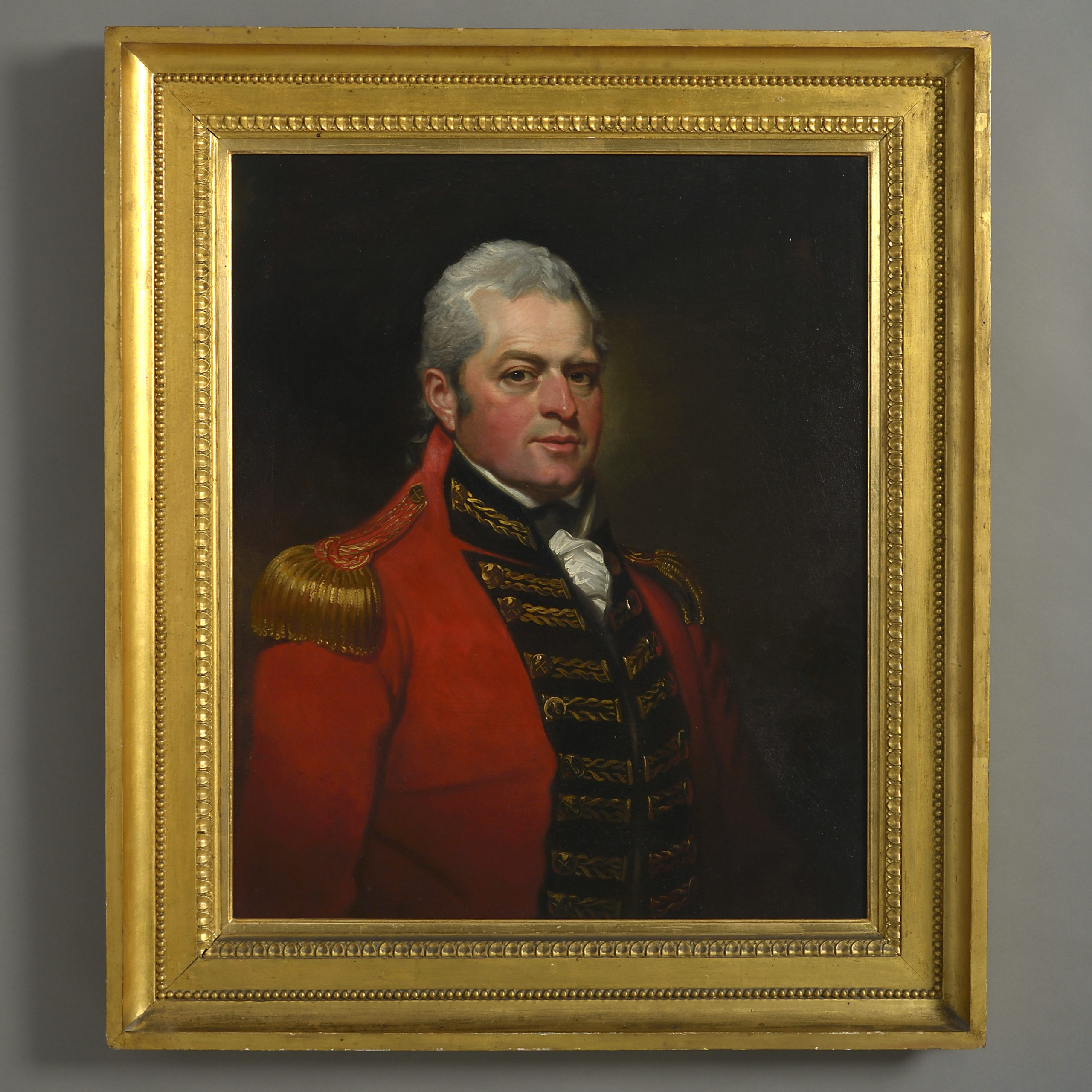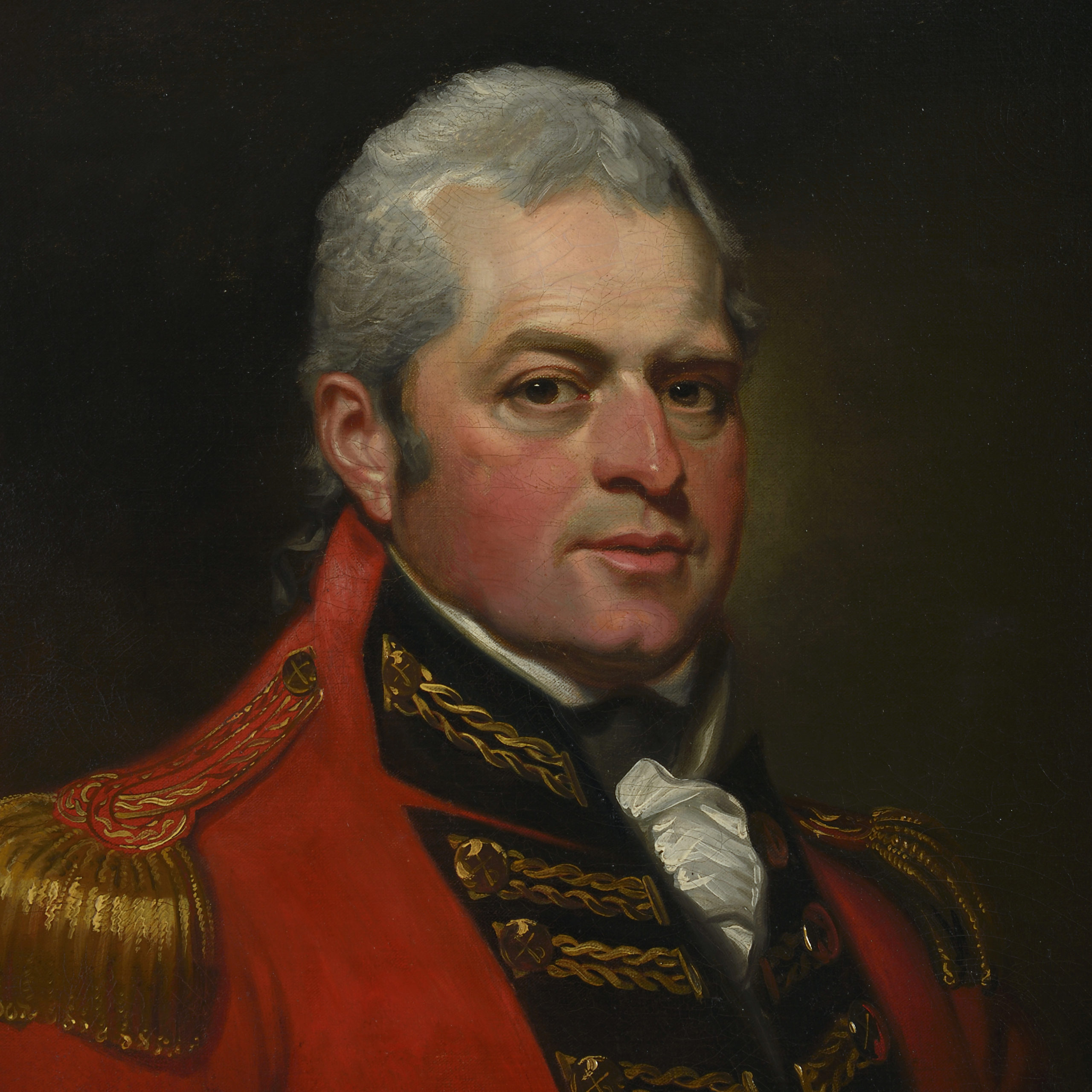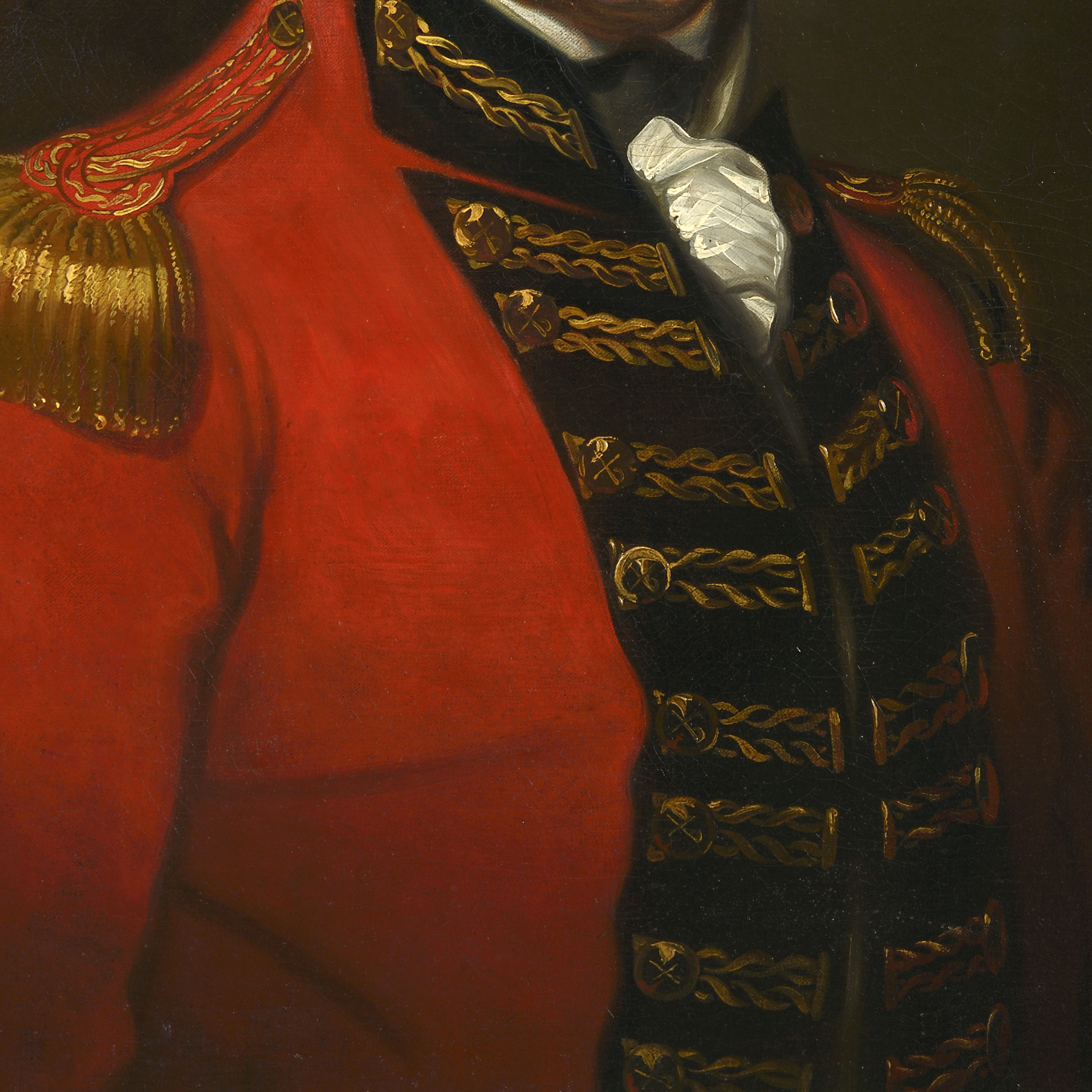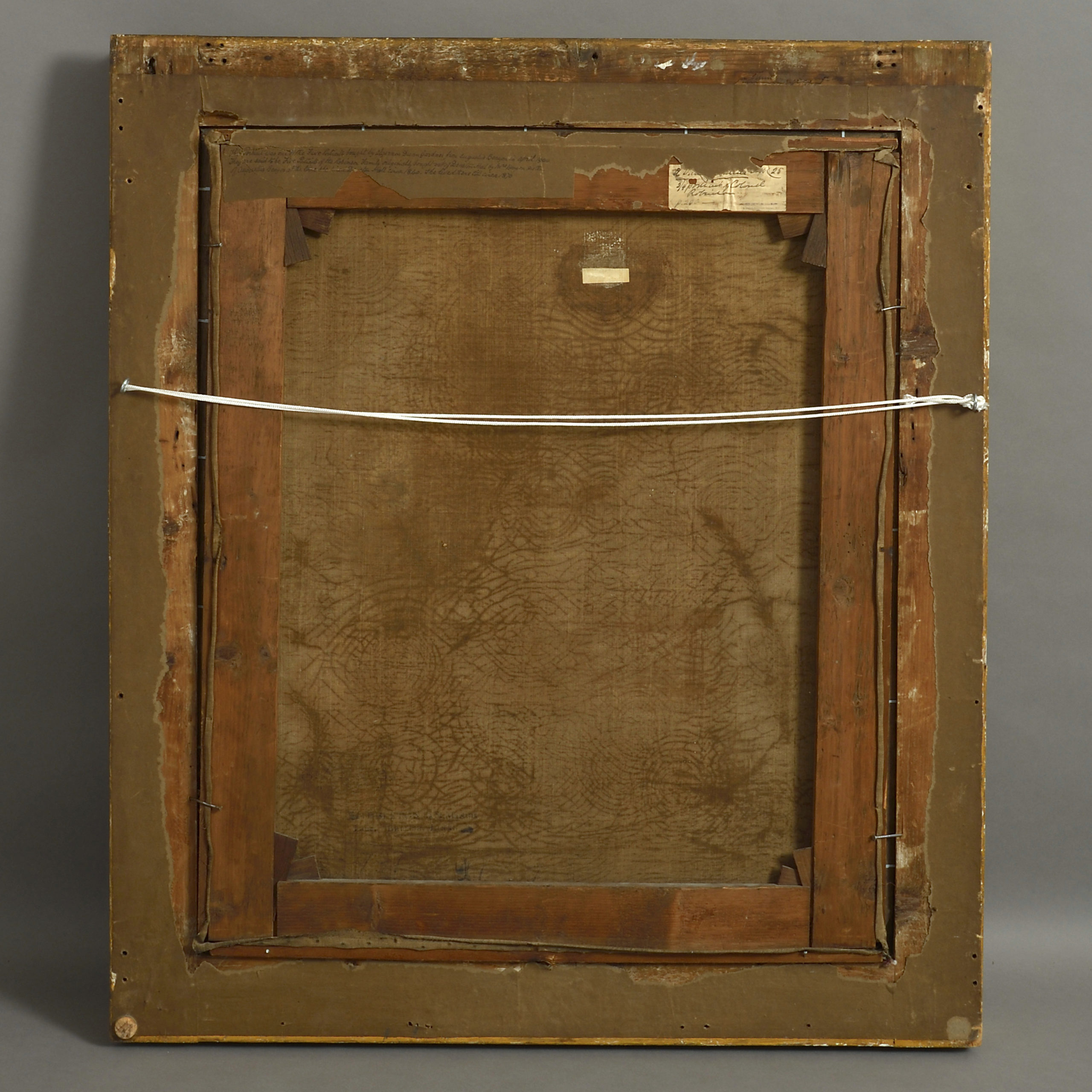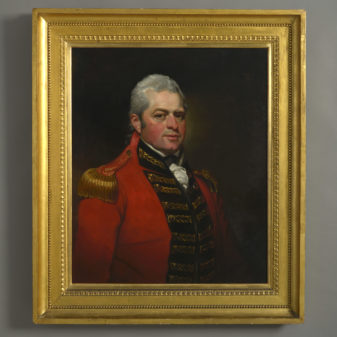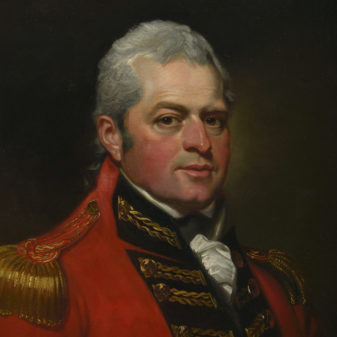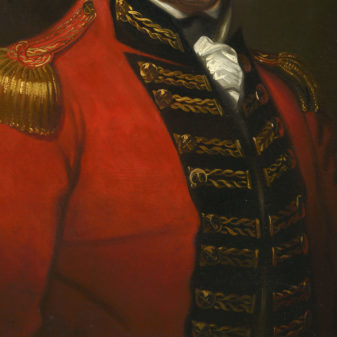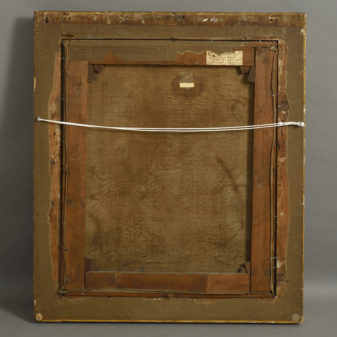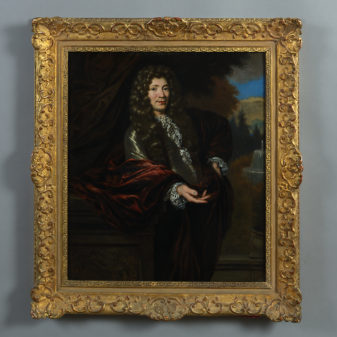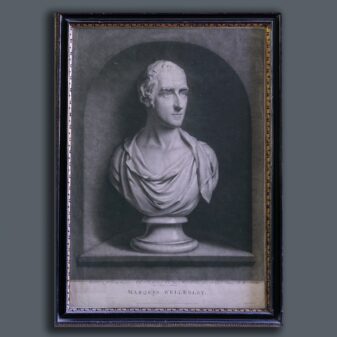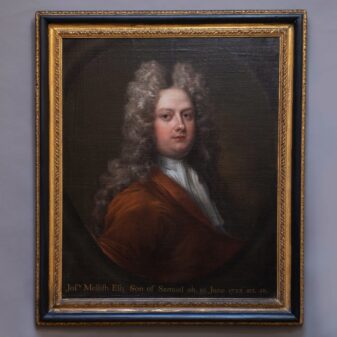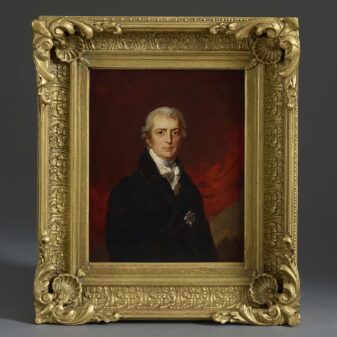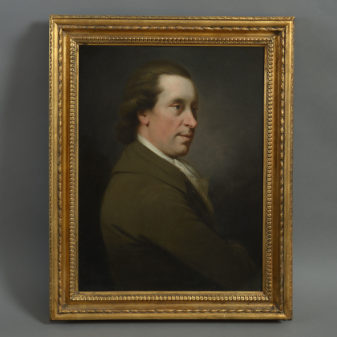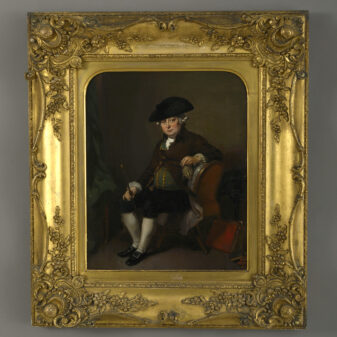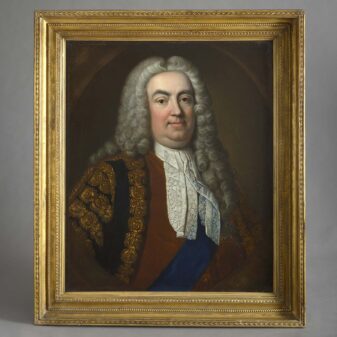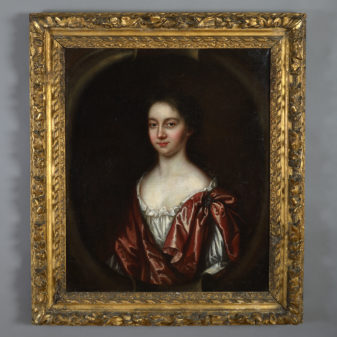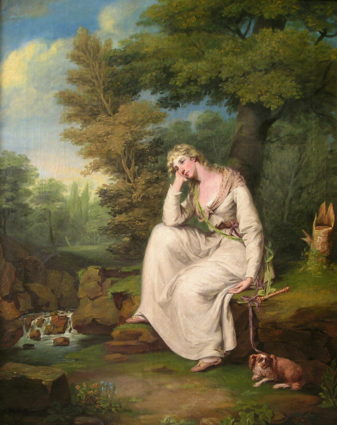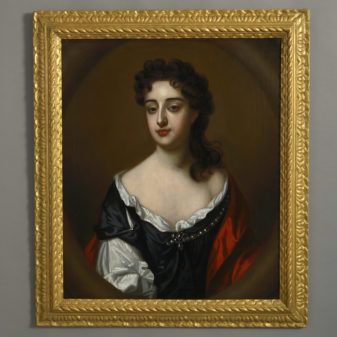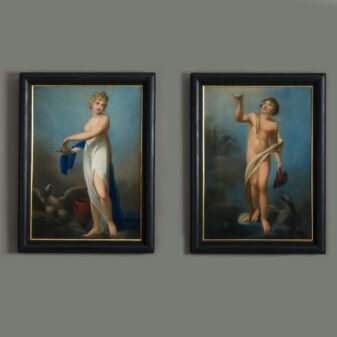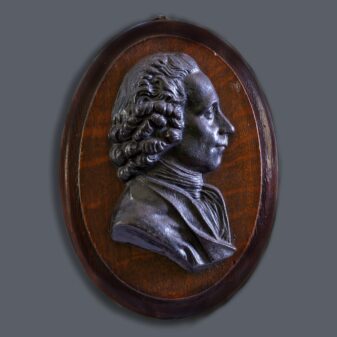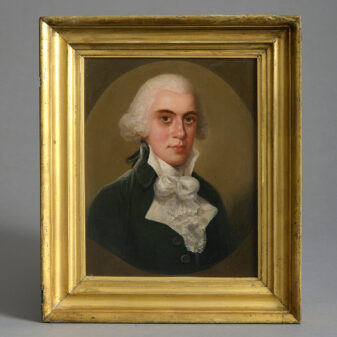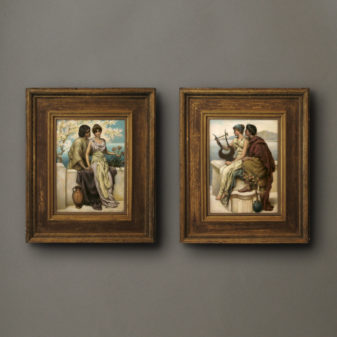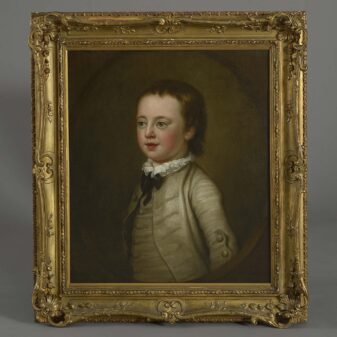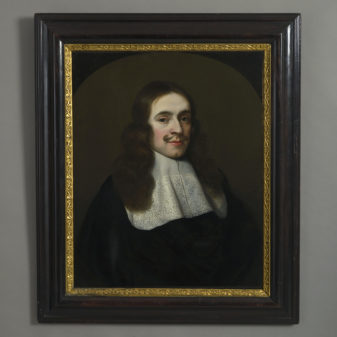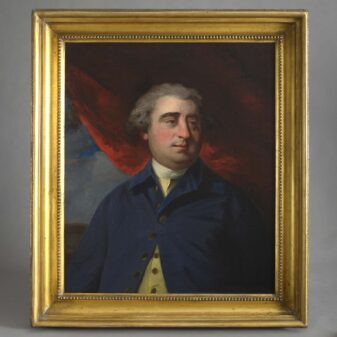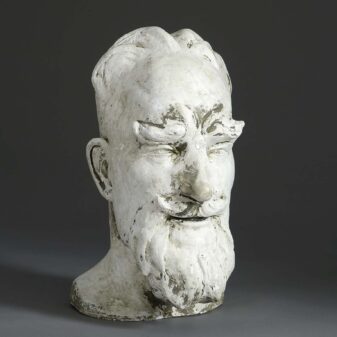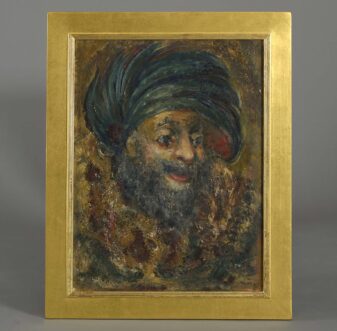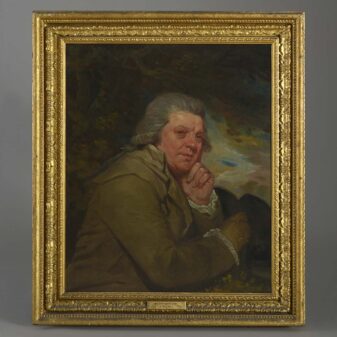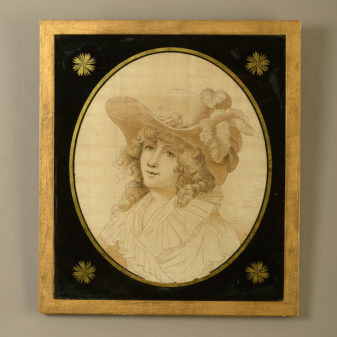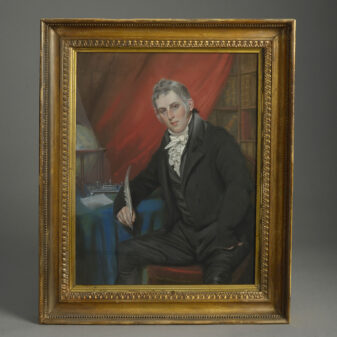Circa 1805 England
Mather Brown (1761-1831) Portrait of Major-General John Robinson (1757-1819)
£9,500
1 in stock
Height 38 1/2 inches (97.75 cm)
Width 33 inches (84 cm)
Depth 2 3/4 inches (7 cm)
Mather Brown (1761-1831)
Portrait of Major-General John Robinson (1757-1819)
Oil on canvas; held in a period giltwood frame
Provenance: Denston Hall, Suffolk and by descent
Literature: Suffolk Portraits, mss by Edmund Farrer, 1921. Vol. 5 (West Supp), entry 230, no.4 – NPG Heinz archive.
John Robinson was a third generation professional soldier, whose father was a Lt.-Colonel. He joined the army in 1773 and was Captain by the time he married Rebecca Clive, daughter of “Clive of India” in March 1782. This family connection helped him immeasurably in his political ambitions as a seat in Parliament became available whilst his brother-in-law Edward, Lord Clive was in India.
The portrait presented here was completed around 1805 when Robinson was a Major-General. This is confirmed by evidence that surrounds an incomplete portrait by George Romney of his late wife Rebecca. Unfinished at the time of Romney’s death, the painting remained unpaid for and unclaimed. On 25th March 1805, William Saunders, a framer, who had been looking after the work wrote to the artist’s son John Romney, “General Robinson, has been with Mr. Brown of Cavendish Sq., and given him directions to finish the picture of Mrs. Robinson…he says he is personally acquainted with you, and will pay you for it”. Mr. Brown was Romney’s old colleague and neighbour Mather Brown and the sum of 20 guineas was paid by Robinson for this work. The portrait of Rebecca is now with the National Trust at Powis Castle, having belonged to Robinson who gave it to his brother-in-law Edward, 1st Earl Powis. Alex Kidson in his catalogue of Romney’s works notes that most of it appears to be in the hand of Mather Brown who must have extensively reworked it to his own style.
Robinson went on to become a Lt.-General and in 1818 went to Paris, possibly as part of the military occupation forces. He died on 23rd May 1819, and was buried at the famous Père Lachaise cemetery. According to his memorial at Denston, “Religion, the only true source of consolation, enabled him to bear the severe domestic losses by which his latter days were embittered.”
The sitter was the last male of the Robinson family of Denston Hall, Suffolk, whose family seat it had been since the early 17th Century. At his death, the property passed to his cousin and through decent to Algernon Dunn Gardner (1853-1929) in whose possession this portrait was noted in 1921.
Mather Brown was born in Boston, Mass. in 1761. He was one of the American artists who made their way to Europe during and immediately after the American revolution to study painting. He went first to Paris, and arrived in London in 1781 with an introduction to Benjamin West from Benjamin Franklin. Planning to be a miniature painter, Brown entered the school of the Royal Academy. He worked also in West’s studio, where his style was influenced by Gilbert Stuart’s and where his ambitions changed to the pursuit of a career as a portrait and history painter. Unlike most of the Americans who studied with West, Brown chose to remain in England for the rest of his life, and West’s influence throughout Brown’s career was very strong. The success of two religious paintings in 1784 for St. Mary’s in the Strand, London, led Brown to found a partnership with the painter Daniel Orme for the commercialisation of these and other works through exhibition and the sale of engravings. Among these were large paintings of scenes from English history, as well as scenes from Shakespeare’s plays. In 1784-1785 Brown painted portraits of John Adams, his wife and daughter, and in 1786 he painted Thomas Jefferson. His full-length portraits of the Duke of York and the Prince of Wales, in 1788 and 1789 respectively, led to his appointment as official portrait painter of the Duke.

